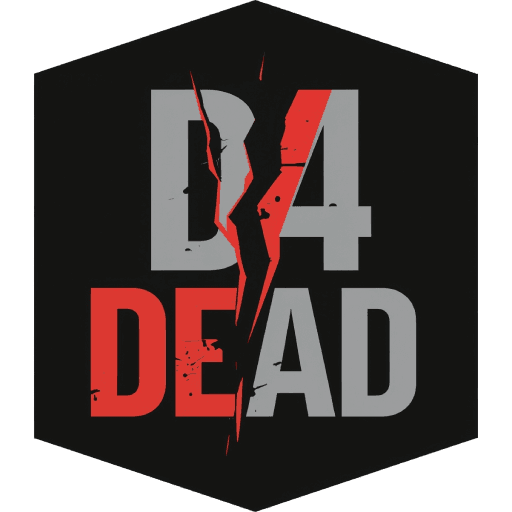Diablo 4 launched with high expectations and strong initial sales, yet it failed to maintain player engagement over time. The core issue lies in a combination of lackluster endgame content and design choices that failed to meet player expectations for progression and itemization. This disconnect led to many players losing interest despite the game’s initial hype.
Several key features contributed to the decline in player satisfaction, including a repetitive endgame loop, underwhelming loot systems, and limited social features such as trading and leaderboards. Blizzard’s decision to implement enemy scaling and restrictive seasonal content further alienated long-term players. While the game achieved commercial success at launch, the ongoing experience did not align with what the Diablo community has historically valued.
The shortcomings in narrative depth and atmospheric immersion also impacted overall enjoyment, contributing to a sense of detachment among fans. These issues, combined with frustrations over quality of life elements and progression stagnation, have created a challenging environment for Diablo 4 to maintain its audience.
Key Takeaways
- Diablo 4 struggled to keep players engaged due to weak endgame content.
- Poor design choices limited player progression and social interaction.
- The game’s atmosphere and narrative failed to fully resonate with its audience.
Core Reasons Behind Diablo 4’s Failure
Diablo 4 struggled due to multiple interconnected issues that affected player engagement, game balance, and market positioning. These factors reduced the game’s long-term appeal despite strong initial sales and widespread anticipation.
Lack of Endgame Incentives and Player Retention
One of the most significant problems Diablo 4 faced was its minimal endgame content. After completing the main campaign and reaching max level, players encountered repetitive activities such as bounties and rifts that lacked meaningful rewards or variation.
This limited progression loop diminished motivation to continue playing. The absence of engaging, diverse challenges made the game feel grind-heavy and stale. Without fresh goals or compelling incentives, many Diablo 4 players drifted away quickly, contributing to a rapid decline in the active player base after launch.
Negative Impact of Frequent Nerfs and Balance Changes
Blizzard’s frequent nerfs and balance adjustments affected player satisfaction in Diablo 4. While aimed at addressing class imbalances and unintended interactions, these changes often disrupted player builds and strategies.
Continuous adjustments created a feeling of instability and frustration, especially for those investing time into optimizing a character. Unlike Diablo 3, which gradually refined class balance, Diablo 4’s early patching cycle undermined player confidence in long-term character development. This contributed to dissatisfaction and further impacted player retention.
Failure to Deliver a Compelling Shared Economy
Diablo 4 introduced a shared economy system expected to enhance trading and cooperation, but it fell short of player expectations. The system lacked depth and meaningful interaction, limiting player-driven market dynamics that could have enriched the game world.
The inability to support robust player trading, especially compared to community favorites like Diablo 2 and Path of Exile, reduced the appeal of collecting and exchanging items. This shortfall negatively affected both social engagement and the economic diversity necessary for sustained interest.
Comparison with Previous Diablo Titles and Competitors
When compared to Diablo 2 and Diablo 3, Diablo 4 did not capture the same balance of innovation and nostalgia. While Diablo 2 is revered for its tight gameplay and itemization, and Diablo 3 for its polished endgame, Diablo 4 struggled to match either in core areas.
It also faced stiff competition from games like Path of Exile, which offer deeper customization, more frequent content updates, and a stronger economy system. These comparisons highlighted where Diablo 4 underperformed, particularly in offering lasting engagement and a satisfying progression model.
Critical Design and Business Shortcomings
Diablo 4 faced significant challenges stemming from design decisions and business strategies that did not align well with player expectations. These issues have affected both gameplay satisfaction and community trust. The game’s always-online requirement, microtransaction model, and Blizzard’s broader corporate approach have all contributed to a declining player base and growing criticism.
Single-Player Experience and Always-Online Requirement
Diablo 4 enforces an always-online requirement, even in single-player mode. This design choice was intended to support live-service features and seamless multiplayer integration. However, it frustrated many players who expected an offline solo experience, especially those with unstable internet connections or a preference for traditional single-player gameplay.
The requirement also limited player agency by enforcing constant server verification. This has led to complaints about lost progress during connectivity issues and reduced the sense of immersion for solo players. Additionally, the persistent enemy scaling system, where monsters level up with the player across areas, diminished the feeling of meaningful progression, further impacting the single-player experience.
Frustrations Over Microtransactions
Microtransactions in Diablo 4 have been a contentious point. Players expressed dissatisfaction with the presence of a cash shop and battle pass system that many felt conflicted with the game’s core gameplay loop. The monetization model, perceived as aggressive by some, created concerns about pay-to-win elements or the encouragement of grinding to access content behind a paywall.
Unlike other Blizzard titles like Overwatch 2, where cosmetic purchases dominate, Diablo 4’s approach included restrictions on trading and limited item customization, leading to frustrations that microtransactions interfered with gameplay fairness and progression. This perception has contributed to negative community sentiment and reduced trust in Blizzard’s intentions for the game’s long-term health.
Blizzard’s Approach and Community Backlash
Blizzard’s handling of Diablo 4 reflects broader issues seen in recent releases, including Overwatch 2. Many long-time fans criticize the company for prioritizing short-term monetization over player satisfaction. Public statements from former Blizzard executives and community leaders have also highlighted a failure to address core gameplay issues promptly.
The company’s reluctance to revamp problematic systems or fully engage with player feedback has fueled a backlash. Seasonal content and live-service features have been perceived as underwhelming, further discouraging player retention. This has intensified concerns about Blizzard’s direction and its impact on the Diablo franchise’s reputation.



